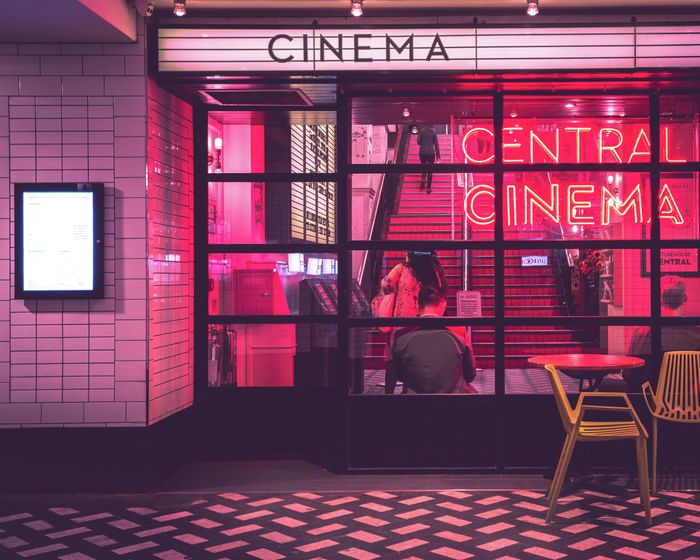Mon Oncle and Cmon Cmon: Uncles, nephews and the contradictions of 20th century cityscapes
Columnist Abby Reeves is back with another Dream Double Feature pairing: today she links Mon Oncle and Cmon Cmon through their depictions of modernity

Mon Oncle (1958) by Jacques Tati, 118 minutes
Cmon, Cmon (2021) by Mike Mills, 109 minutes
Cinema has been inundated with a flood of films detailing the complexities of father-son relations since its conception. This is perhaps due to the overwhelming dominance of male directors in mainstream cinema, who have beaten the theme (almost) to death. One topic which remains slightly more obscure is the relationship between uncles and nephews. The two films we explore today are linked most formally through their presentation of uncle-nephew relationships. Unfortunately, I’m not a huge fan of kids, so we will turn instead to each film’s exploration of the modern city and the diversions they take from their fictional stories.
“A stark contrast between idealist futurism and a nostalgia-tinted past”
We begin with the light-hearted comedy Mon Oncle by Jacques Tati, best known for his beloved character Monsieur Hulot. Hulot ventures into the modern hub of the city to pick up his nephew from school and attempts to fend off his sister’s misguided efforts to convert him to her version of normalcy. The film’s saturated colour palette and playful slapstick comedy makes it the perfect introduction to Tati’s charming style (one only needs to look at Wes Anderson’s The French Dispatch to see its aesthetic endurance) and, crucially, to nephew-uncle relations.

Mike Mills’s most recent feature-length film C’mon, C’mon launches us into a contemporary portrait of modernity. We expand into a broader screen ratio and trade Tati’s signature primary colours for grainy black and white, returning perversely to a look associated most often with old-fashioned cinema to capture Joaquin Phoenix and Woody Norman’s uncle-son dynamic. The two explore both soundscapes and cityscapes with one another, gradually warming to each other — which is brought to life by both actors’ intimate lead performances.
“One of Tati’s trademarks is the exploration of a hyperbolic modernity”
As we move from one film to the other, Tati’s anxious portrait of modern life is succeeded in 2021 by Mills’s acceptance of it. One of Tati’s trademarks is the exploration of a hyperbolic modernity, characterised by nonsensical technological advances and retro-futurist architecture. Hulot’s sister’s house has an obscenely well-manicured garden, its centrepiece a phallic fish fountain which she rushes to turn on for the guests she esteems good enough. The bourgeois suburbs’ all-encompassing uniformity is disrupted by Hulot’s quartier. Tati resurrects the stereotype of the provincial French village marketplace to create a stark contrast between idealist futurism and a nostalgia-tinted past. The line between the two is realised visually: the characters move between the two crossing a broken wall, and at one point we are shown workers tearing down older buildings as modernity encroaches.

Navigating modern life and heartbreak via Scarlett Johansson
While Tati’s film is pinned in the context of escalating consumer culture in late 50s France, Mill’s protagonists inhabit the sprawl of the city with ease. They brush shoulders with skyscrapers, capturing the sounds of urbanity, jet-setting and taxi-taking. We bump around between LA and New York, stop-off in Detroit and New Orleans. The pair of uncle and nephew pale in comparison to the sheer immensity of the urbanity surrounding them. Johnny’s job as a radio journalist is the reason they travel so much; he’s interviewing young people around the country for a documentary.
Mills, although shooting a fiction film, manages to capture a little slice of time just before COVID-19 hit, documenting the thoughts of young people on the future. He ended up editing most of it during lockdown, ending filming in Detroit just as the mask mandate came in.
As we encounter real people briefly through these interviews, Tati also shares an occupation with those outside its main fictional story. Although Mon Oncle does have a central narrative, its camera is somewhat absent-minded, lingering on the lives of passers-by, side-tracked momentarily by strangers. It occupies itself with the mundane: a vegetable seller scamming a customer, a street sweeper trying to maintain a conversation as long as possible to avoid work, a gang of mischievous children. Although clearly as fabricated as the rest of his set-like scenes, they demonstrate a persistently charming curiosity which pervades Tati’s body of work.
Total Length: 227 minutes, suggested dinner break in between as C’mon C’mon is best watched at night
Best accompanied with: Fast Cars, Clean bodies by Kristin Ross
Recommended if you like: Wes Anderson’s visuals (anything Tati will look good to you) and the charm of childhood innocence
Where to watch: C’mon C’mon is rentable on Youtube and Amazon, Mon Oncle can be found on DVD at the MML library (it’s the easiest and cheapest way to watch foreign films, I promise!)
 Comment / Cambridge’s tourism risks commodifying students18 April 2025
Comment / Cambridge’s tourism risks commodifying students18 April 2025 Comment / Cambridge students are too opinionated 21 April 2025
Comment / Cambridge students are too opinionated 21 April 2025 News / Cambridge researchers build tool to predict cancer treatment success19 April 2025
News / Cambridge researchers build tool to predict cancer treatment success19 April 2025 News / News in brief: campaigning and drinking20 April 2025
News / News in brief: campaigning and drinking20 April 2025 Interviews / Meet the Chaplain who’s working to make Cambridge a university of sanctuary for refugees20 April 2025
Interviews / Meet the Chaplain who’s working to make Cambridge a university of sanctuary for refugees20 April 2025


